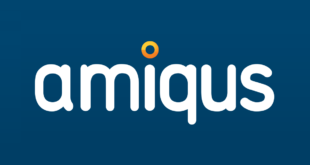Nintendo has published Satoru Iwata’s QA session with journalists at a recent investor briefing. MCV has split the press conference into three digestable sections, focused on the following topics:
Part 1: Sales and projections
Part 2: New hardware, new peripherals
Part 3:Non-gamers and production
Please explain your future vision. I believe that Nintendo’s efforts have made games sell well outside of the year-end holiday season. I am wondering if you think this holiday season will be tougher than usual as many of your and third-parties’ principal products’ launches seem to be concentrated there. Like Wii Sports Resort had been postponed for some months, is there now an increased possibility of re-scheduling launch dates?
Please take a look at this slide;
It shows Mario Kart Wii and Wii Fit, which were released in the April-June period last year and have sold 15.4 million and 16.37 million units respectively. Of course this is the result of the whole fiscal year. On the other hand, during the same period this year we did not release any software titles which would have sold millions of units worldwide.
As you mentioned, we were developing Wii Sports Resort and originally intended to release it earlier. We wanted to release it with enough supply of Wii MotionPlus, and were confident that it would become much better with a little more time and effort. Thus the launch was slightly postponed to the end of June in Japan, and end of last week in July in the U.S. and Europe. For this reason, we are launching Wii Sports Resort in Q2 of this fiscal year, then Wii Fit Plus and New Super Mario Bros. Wii in Q3 of this fiscal year.
These three titles have already been available for hands-on demonstrations at E3 this year. They were highly evaluated by most of those who actually tried them. Distributors also gave feedback like "The key player of this holiday season will be Nintendo as expected." So I believe each of these three software titles have the potential to surpass 10 million copies worldwide in the whole fiscal year.
If we could have launched such titles during the last Oct-Dec quarter, it would have been almost impossible to achieve this full-year sales to surpass that of last years with the remaining nine months. However, Wii Music and Animal Crossing: City Folk did not fulfill our expectations and only sold through end 2.65 and 3.38 million copies respectively. Should those two titles have become long-term selling software, we would not have faced a shortage of software titles in the former half of this year.
Sales of those titles declined in a relatively short period, and Mario Kart Wii and Wii Fit continued to perform better and drove hardware sales. As for the result of last fiscal year, two powerful titles released in the beginning of the year kept driving the market and Wii hardware sales. However, no software title can maintain its momentum after a year or more from its launch. So we find that the reason of downturn in Wii sales can be attributed to two main factors – we could not launch Wii Sports Resort earlier and could not make the software launched in the last holiday season have longer tails. In order to maintain momentum in the market, we of course must release something new periodically, not just before Christmas, but on the other hand, we do not have foresight into the whole situation of a software under development. No one can tell which software titles during the planning phase will be able to deliver fun and surprise in the future. We often run into certain realization after the actual development process begins, which may delay the completion of the product. This time I think we have made such mistakes.
As for this year, I am not worried about the launch schedules of Wii Fit Plus and Super Mario Bros. Wii. Concentration of major titles in the latter half of this fiscal year can be seen not only with Nintendo but also with other publishers. The NPD Group has been reporting that video game sales in the U.S. in March, April, May and June this year were weaker than last year. It is not simply because of tough economic times; rather other companies released hit titles like Grand Theft Auto 4 and we released Mario Kart Wii and Wii Fit, which all were ten-million-unit class sellers worldwide last year and made a significant difference between last and this year. Conversely for the latter half of this year, we believe we can expect even bigger sales with those ten-million unit class sellers on a worldwide basis. In fact, we recognize this Q1 result as not the strongest and closer to the lower parameters of our expectations, but we expect we can reverse the situation through the full-fiscal year and therefore did not revise our forecast.
Please explain in detail about sales situation in July, especially in America and Europe, where Wii Sports Resort launched just a week ago. How do you see the shipment, sell-thru and future forecast for the title, and how are consumers responding to it?
As Wii Sports Resort just launched, I think it is too early to tell its performance potential with to-date results. If Wii Sports Resort was a type of fast-selling software at launch selling two to three million copies in the initial week, I could tell you the result today for your peace of mind. However, this title is not the case and rather it’s a kind of product which will build significant result in the very long term. As for how Wii Sports Resort will affect Wii hardware sales, I hear it’s slightly driving the hardware sales, but not significantly. It has not doubled or tripled sales and I do not expect it to do so in the following weeks. We have developed some titles which sell well in the long term while driving hardware sales, starting with Brain Age. These software have some things in common; they take six to eight weeks to start driving the hardware sales. We can not logically explain why they take exactly six or eight weeks, however, we actually have data from our customers through Club Nintendo that shows whether a customer registered their hardware purchase on the week when they registered software purchase. We research the "hardware driving ratio" from that data. Almost every title has a very low hardware driving ratio right after its launch. After six or eight weeks from launch, if the title still maintains its sales momentum, its driving ratio starts to rise. That is, such long-term selling titles motivate customers to purchase hardware or to consider purchasing the title with the hardware.
In that sense, it is too early to tell if Wii Sports Resort is driving hardware sales now to what degree, before we have enough data in two months or so. With our past experiences and expectations for Wii Sports Resort given the earlier launch in Japan, I’m sure we will get some solid result in the next two months to share with you.
Home console business tends to slow down in July and August, and pick up again in September. So in these months, except for very seasonal sports titles like EA’s Madden series that launches around the end of August every year, big home console titles tend not to launch.
In September, which people overseas call "back-to-school," people start to pay more attention to home consoles. If we can convey the appeal of Wii Sports Resort to existing customers then, it will surely contribute to the sales of hardware and generate good momentum toward the holiday season. So we feel that Wii Sports Resort will drive hardware sales mainly in Q3 from October to December. Last year, we had some internal discussions about the close launch period of Mario Kart Wii and Wii Fit but we ended up launching them with the hypothesis that several major title launches in close proximity can produce a synergetic effect. As a result, it went very well. This year we hope to do well again as we will be launching three ten-million class titles consecutively, and would love to hear that "Holiday 2009 was the best one ever for Nintendo!"
There is a considerable decrease in European Nintendo DS sales, even after the launch of Nintendo DSi overseas. How do you analyze the current situation of foreign markets, and what is your perspective for the future in those markets?
To explain the Nintendo DS business in its entirety, the number of hardware sales has decreased, however, total amount of business has not dramatically changed since last year, which reflects the gap of price between Nintendo DS Lite and Nintendo DSi. Also, we rolled out a multi-color campaign for Nintendo DS Lite in June last year in Europe, which local distributors responded strongly with huge sell-ins, and which was not a factor in this year’s sales. As analysts often ask for more specific numbers for the European market, so I have brought some here today market, so I have brought some here today. You ca see the spike here, in the latter part of 2008.
This is the result of the multi-color campaign I mentioned. As we have not done anything similar to boost sales in particular this year, we have not seen an add-on in sales. A big spike in the middle of the chart is, as you may assume, when Nintendo DSi launched. Before that Nintendo DS sales were lower than last year, so the launch of Nintendo DSi helped increase the sales and overall sales volume through June appears nearly equal to last year. As for our future development in Europe, let me show you a title which is making noticeable sales.
This is a software called Professor Layton series. You may be surprised at the completely different packaging that is exclusive to the European market. In Japan Professor Layton was published by LEVEL-5, but in the U.S. and Europe this title is published by Nintendo. We adopted this exclusive packaging to make it one of the next choices for new game players who started with Brain Age.
This graph, which surprises me, shows the differences in sales trend of the first Professor Layton title in the Japanese, American and European markets.
In the Japanese market, it sold more than 900,000 copies, and actually, after two years on the market, it is reaching a million now – the graph is cut off so it is easier to see. I think you can notice an exceptional sales trajectory made in the European market. We found that the marketing tactic with the exclusive packaging may have contributed and positioning as the next choice following Brain Age worked. According to our internal research, many of its owners are female and many of them started gaming with Brain Age. In fact we focused our resources for the series as we thought this would benefit the Nintendo DS market in the long-term as a trilogy if we started it up right. As a result, we have so far sold nearly 1.4 million units, and it seems it is keeping its momentum to reach 2 million units as weekly sales have not dropped. This fall we will release its second title, in a package like this (slide), and we would like to market it as "the next choice" in Europe.
In the U.S. market, you can see a spike in red on the right end. We released it in the U.S. earlier than in Europe. However, we used the Japanese packaging there, which might have been the reason why it did not kick off well in the U.S. It was actually with the ignited sale of Professor Layton in the U.K. that made us switch our advertisement and re-marketed it—this red spike is the result. I have no way of knowing how much the developer was considering the foreign market during development, if at all, but at the very least, I found it possible to connect the sales potential to actual overseas sales depending on how we market the product overseas based on how it was welcomed by many Japanese customers. The key is how many of such examples we can make.
In fact Mario Kart, The Legend of Zelda or new Mario action titles are important to Nintendo in that they make Nintendo’s hardware worth purchasing without a doubt. At the same time, it is also important that some unexpected titles perform well. To take last year’s example, I think no one in the video game industry had expected Rhythm Heaven would sell over 1.7 million copies in Japan. More past examples include Nintendogs or Brain Age, which no one expected them to have great sales either. Even though the sales scale of Rhythm Heaven is much smaller than these two titles, it is still an exceptional result under this current circumstance where it is getting harder year by year for a brand new franchise to launch. Also, Girls Mode (Style Savvy) achieved similar results, with total sales of around 900,000 copies to date. These are examples of brand new franchise that eventually significantly impacted the market.
The most recent example is Tomodachi Collection, which was released on June 18th in Japan and sold more than 400,000 copies so far, although it only received 100,000 copies of initial orders. That means our distribution customers expected 100,000 copies of Tomodachi Collection was enough for a month where it has sold 4 times as much so far. I believe that products that can create such sales are equally important for our business as much as selling Mario Kart, Mario, Pokmon or Zelda titles.
If two or three of such titles can regularly be launched, they would stimulate the market a lot and provide an opportunity for a large number of new audience to try games. However, if we start to launch only with sequel titles, it will just be reducing reproduction and decreasing our future possibilities. Although what performs well in Japan may not always do so overseas, we have past results like Nintendogs or Brain Age, which had been seen as unlikely to make it overseas, but had actually performed far better than in Japan. We are not pessimistic about the future of Nintendo DS market, if even one of the products that I have introduced today performs well overseas. And I also believe that it is the role of Nintendo in the video game industry to do so.

 MCV/DEVELOP News, events, research and jobs from the games industry
MCV/DEVELOP News, events, research and jobs from the games industry



